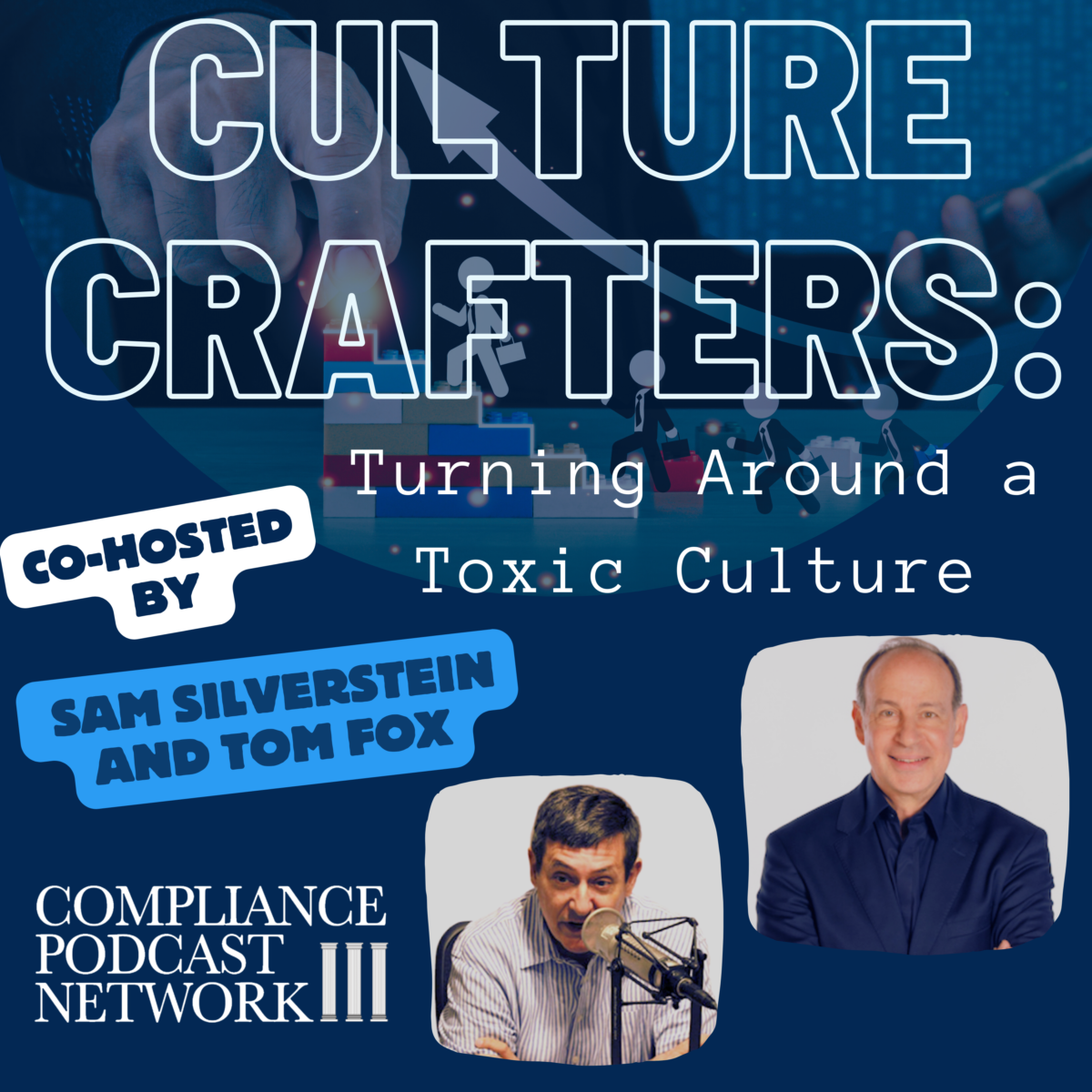Boeing is not the first company to find itself amid a massive scandal. You can think of Siemens’ bribery and corruption scandal, the VW emissions-testing scandal, the Wells Fargo fraudulent accounts scandal, or any other myriad of corporate scandals where culture failed and created a toxic culture. The question for any organization in such a situation is how to transform its culture. Currently running on the Culture Crafters podcast on the Compliance Podcast Network is a 5–part of podcast series with myself and Sam Silverstein, the most trusted voice in America on accountability. (The Culture Audit™ is the sponsor of this blog post series.)
In this companion, 5-part blog post series, we look at the ways a company in the depths of such a toxic culture can begin to make a culture comeback by planning out and taking concrete steps to turn around and rebuild its culture. In Part 4, we look at how to take on a culture transformation through the design and implementation of a culture change strategy.
Implementing a culture assessment is vital in assessing the current state of an organization’s culture and identifying areas for improvement. This systematic evaluation provides valuable insights into the underlying values, norms, and behaviors that shape the organizational environment. By conducting a thorough culture assessment, companies can pinpoint specific issues, align organizational values with actions, and develop a strategic roadmap for cultural change.
From there, you can leverage the findings from a culture assessment to tailor your remediations to address the root causes of toxicity and nurture a culture of integrity and excellence. By emphasizing the actionable nature of culture and culture assessment, an organization can make informed decisions and implement targeted strategies to drive positive cultural shifts within their organizations.
The process is similar to managing any other risk. After a culture assessment has revealed the strengths and weaknesses of any organizational culture, it can provide actionable insights on addressing specific issues and lay the foundation for cultural transformation. Whether a culture is by design or default, the culture assessment is a guiding light in formulating strategies to drive positive change. The culture assessment provides information about improvement, so you should assemble your plan. Once you have the strategy in place, you train your employees.
Once you have trained on the new culture strategy, you must implement it. This is where senior management again becomes so essential. A recurring theme for organizations with superior cultures is that actions speak louder than words when shaping workplace culture. It all starts with leaders who must embody the values they expect from their employees. Actions speak louder than words, and when leaders consistently demonstrate the organization’s values, it sets the tone for others to follow suit. Leaders must embody the values they expect from their employees. This role of leadership in spearheading culture transformation includes the profound impact a leader’s actions and behaviors have on shaping the culture within an organization. Leaders can inspire a culture of trust, accountability, and excellence by showcasing genuine engagement with employees and embodying core values.
It also means enforcing accountability and upholding values. This means holding everyone, regardless of their position, accountable for their actions. If a person’s actions supersede the organization’s values, it questions the strength of those values. Actions speak louder than words, and when leaders consistently demonstrate the organization’s values, it sets the tone for others to follow suit.
In a world where workplace culture plays a pivotal role in the success and sustainability of organizations, the need for understanding and transforming culture has never been more critical. This is true whether your organization has sustained a catastrophic culture failure, similar to what we see currently ongoing with Boeing, or has brought on a new acquisition or even a joint venture partner. Upgrading and updating your culture will be critical for any corporation to succeed.







